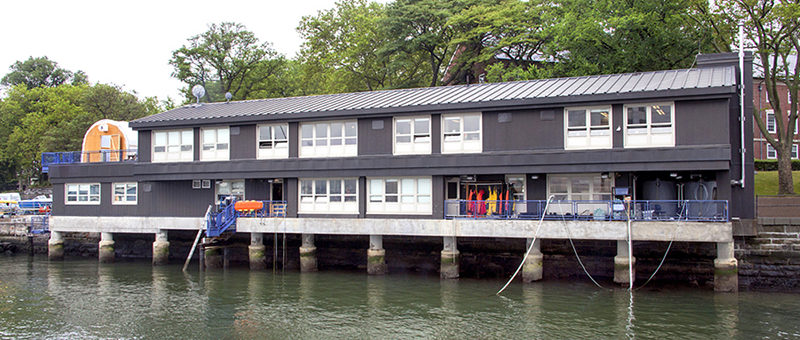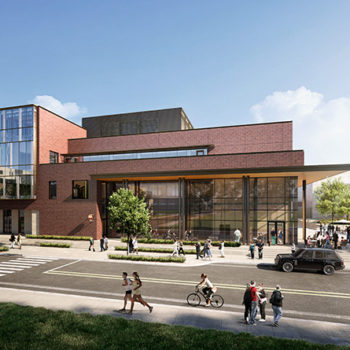
New York Harbor School Center Emphasizes Marine Sciences
- Posted by Gaby
- On September 28, 2016
- 0 Comments

The New York City School Construction Authority and the architectural firm of John Ciardullo, P.C. completed the Marine and Science Technology (MAST) Center at the Urban Assembly New York Harbor School on Governors Island, N.Y.
Photo Credit: Ola Wilk/Wilk Marketing Communications
GOVERNORS ISLAND, N.Y. — The New York City School Construction Authority (SCA) and New York-based architectural firm John Ciardullo, P.C. (JC) recently completed the Marine and Science Technology (MAST) Center at the Urban Assembly New York Harbor School. The school is located on Governors Island, a 172-acre island located approximately 800 yards from the southern tip of Manhattan Island, and allows high school students interested in aquaculture and marine sciences to expand their studies.
Housed in a converted former U.S. Coast Guard support center and dormitory building originally erected in 1987, the MAST Center serves as an education and research facility for both students and researchers. The 9,500-square-foot, two-story steel frame and concrete slab floor building is cantilevered on piles above the New York Harbor and straddles the bulkhead surrounding Governors Island, according to a statement. A major part of the project included replacing all exterior windows to comply with the SCA’s Green Schools Guide and Rating System’s energy-efficiency requirements, layout revisions and renovations to interiors, and the installation of mechanical, plumbing and electrical systems.
The New York Harbor School serves 432 students in grades nine through 12 and is operated by the Urban Assembly, a nonprofit organization that creates schools designed for training high school students in marine sciences, vocations and trades. As such, students learn to build and operate boats; spawn and harvest oysters; design submersible, remotely operated vehicles; conduct real-life research; and learn underwater diving, according to a statement. They also help run the school’s on-going oyster restoration research program.
“The new $3.7 million, MAST Center will allow the New York Harbor School’s students to develop ambitious aquaculture programs such as oyster farming, as well as to build and maintain vessels, train in SCUBA diving, expand marine biology coursework and undergo ship navigation training on a ship bridge simulator,” explained John Ciardullo, R.A., principal of JC.
The MAST Center’s aquaculture program features an on-site oyster hatchery, created to produce 10 million oysters each year to help restore the marine life ecosystem in the New York Harbor area. The hatchery is part of the Billion Oysters Project, a long-term plan to restore 1 billion live oysters to New York Harbor over the next 20 years.
Located on the center’s first floor are an aquaculture classroom and laboratory with oyster hatchery tanks, a boat construction and maintenance shop with garage-door access, a new entrance lobby and a SCUBA gear storage room. The oyster hatchery also includes water-storage tanks, recirculation pumps and heat exchangers.
On the MAST Center’s second floor, there is an open space for a ship operation classroom with a Transas bridge simulator. The simulator allows the school to teach students about radar, electronic chart display and information systems (ECDIS), bridge resource management and sea time course work. Offices for the New York Harbor Foundation, which funds the maritime programs of the Harbor School, are also located on the second floor. The organization helps students prepare for and finance college education, manages the Billion Oysters Project and operates several other summer and after-school programs that focus on student career development and restoring the New York Harbor.



0 Comments